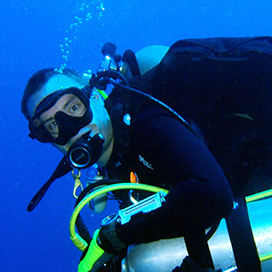
Move beyond the walls of the classroom with study abroad, internships, experimental learning classes, or independent studies. Learn the context of a broader world.
St. Mary’s small size (about 2,000 students), permits us to give much more individualized treatment than would be possible at a large university. We do not have graduate students, so our attention is firmly focused on undergraduate students.
Classes are small, with an overall 10:1 student to faculty ratio. The laboratories of each course are also small, and all the labs are taught by professors, not graduate-student teaching assistants. This contact in laboratory between student and professor is exceptionally important.
First, we have many years of experience, while teaching assistants at large universities do not.
Second, students at St. Mary’s are very likely to have their laboratory professor again in advanced classes, or they may become the professor’s academic advisee, or perhaps the student will select this professor to advise their St. Mary’s Project.
Finally, when the time comes to request letters of recommendation for jobs or graduate school, there will always be professors who know the student well and can write honestly and in depth. All biology faculty members have Ph.D.’s and are engaged in active research, and the most sophisticated biological instrumentation we have is available for undergraduates to use. I think this intense, long-term relationship between faculty and undergraduate students makes the experience at SMCM profoundly different from that at a large university.

